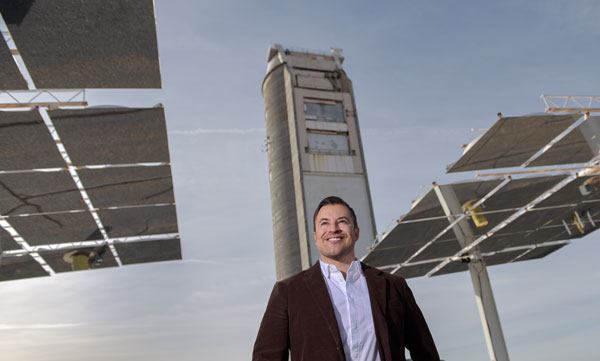
The population of Hispanics/Latinos in the United States is expected to grow by approximately 40% by 2045, although only approximately 14.4% have bachelor’s degrees or higher and 7% are employed in science, technology, engineering and mathematics industries.
Since 1990, STEM employment in the United States has grown 79% (9.7 million to 17.3 million), whereas computer technology-based jobs have seen a very significant 338% increase over the same period.
Presently at Sandia, Hispanics and other minorities make up a significant 34% of the overall workforce. That number is expected to increase, thus promoting diversity at our sites.
Inspired by parents and mentors
As a second-generation Hispanic growing up on a rural New Mexico farm, I was inspired by my parents and mentors to seek a college education. They understood the importance of education and the positive impact this would have on our culture and future agriculture in the community. Studies from the Pew Foundation have shown that second-generation Hispanics have higher attainment of college degrees by 36% versus 29% for their first-generation parents, due in part to increased encouragement from their parents and access to educational resources throughout their entire education.
During my upbringing, I became acutely aware of the challenges and hardships that my relatives, friends and migrant workers (with whom I worked while at the University of California, Berkeley, conducting SEGURO research in California’s Central Valley) had to face when trying to attain the American dream here in the United States. As a result, I realized that education was the only way forward to a better and more successful career. My focus became clear: I needed an education to help inspire and mentor other Hispanic students as my parents did for me.
When I received my doctorate in mechanical engineering from the University of California, Berkeley, I was elated. However, at the same time, I was disappointed by the very low percentage of science and engineering doctorates that were awarded to Hispanics and other minorities from the top 10 universities that year. This elucidation encouraged me, at the end of my UC Berkeley program, to make changes that were direly needed to promote diversity. I began facilitating STEM outreach programs to students in middle and high schools with high minority enrollment. This experience had positive outcomes, enabling me to bring these educational programs to New Mexico when I started my tenure at Sandia.
Commitment to ‘Noche de Ciencias’
My colleagues and I at Sandia and other institutions (Intel, General Mills and the University of New Mexico) have created “Noche de Ciencias” (Science Nights) events for K-12th-grade students and their parents, to teach them about the value of getting an education, particularly a college degree in a STEM field. Many of these events have also brought together middle and high school students to interact with Hispanic engineering college students from UNM, Central New Mexico Community College and the New Mexico Institute of Mining and Technology, stimulating pipeline learning and inspiration. These events provide students with activities to encourage and excite their interest in STEM. At the same time, we conduct bilingual workshops for parents, emphasizing the value of college education for their children and how to receive financial assistance so that they can graduate with college STEM or vocational degrees.
Sandia for years has promoted diversity and STEM outreach. The resources provided by Sandia’s community involvement program have truly made a remarkable impact, ensuring that all populations, including Hispanics, women and other minorities from pre-K to doctorate, will receive the same opportunities in obtaining STEM degrees here in New Mexico.
Our consortium of industry and academic partners, led by Sandia, has also facilitated other STEM programs, giving students more opportunities than their families previously had. The group also sponsors activities that connect the sciences to students’ Hispanic heritage in unique ways.
Overall, it is vitally important that these efforts continue. They not only help to enrich our cultural heritage, but they also enhance the quality of our scientific community.